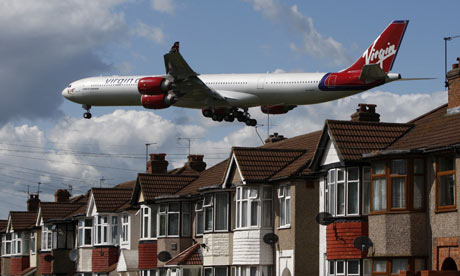Our research shows that over the past 10 years government agencies have spent £80m on helping private enterprise to increase the number of flights. Airports in the UK are – or are supposed to be – commercial operations. Airport companies build them then recoup their money by leasing space and landing rights to carriers and renting out pitches for shops. Until we had completed this research, government policy looked wrong but consistent: the free market was being allowed to let rip, regardless of the environmental consequences. Now we know that the government has intervened to accelerate this growth.
Of the £80m, £17m has been spent by bodies controlled by the national assemblies. Scottish Enterprise has spent £8m on developing air routes between Scottish airports and English or European cities, and on subsidies and grants to British Airways, Ryanair, Loganair and BAA. Invest Northern Ireland has spent £3m on developing new air routes. The Welsh Assembly Government has paid £6m to construct and run a new airport terminal, subsidise the Scottish company Highland Airways, give the airlines discounts for airport charges and market flights from Cardiff to Paris and Barcelona.
Here’s the full list of subsidies paid out to UK airports:
DATA: download the full table, with full details
Development Agency | Total funding, £ |
|---|---|
| North West Regional Development Agency (NWDA) | 12,015,318 |
| One North East | 11,138,547 |
| Yorkshire Forward | 16,360,000 |
| Advantage West Midlands | 169,561 |
| East Midlands Development Agency (EMDA) | 2,474,350 |
| East of England Development Agency (EEDA) | 803,593 |
| South West Regional Development Agency (SWRDA) | 19,084,000 |
| South East of England Development Agency (SEEDA) | 400,000 |
| London Development Agency | 1,654,245 |
| Scottish Enterprise | 8,140,665.06 |
| Invest Northern Ireland | 2,944,713 |
| Welsh Assembly Government | 5,633,939 |
| Total UK Funding | 80,818,931.06 |
http://www.guardian.co.uk/news/datablog/2009/jul/07/airports
.
.


